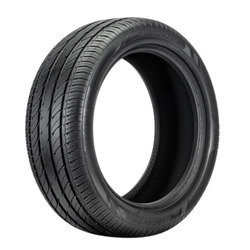

**How Digital Sales Tools Accelerate Revenue at Motorcycle Dealerships**
In the current rapidly evolving and tech-savvy marketplace, motorcycle dealerships are progressively adopting digital sales tools to improve customer experiences, optimize operations, and ultimately elevate sales. As consumer behaviors shift towards online research and purchases, dealerships that embrace digital change are setting themselves up for sustained success. This article delves into how digital sales tools are transforming the motorcycle sales landscape and driving higher revenues for dealerships.
—
### 1. **Improved Online Visibility and Lead Acquisition**
Today’s consumers initiate their buying journey online. Digital sales tools such as adaptable websites, search engine optimization (SEO), and social media strategies enable motorcycle dealerships to attract and engage prospective buyers early in their decision-making journey.
– **Inventory Management Systems**: These tools enable dealerships to display real-time inventory online, featuring high-quality images, specifications, and pricing. This openness fosters trust and motivates customers to proceed further.
– **Lead Capture Forms and Chatbots**: Integrated forms and AI-driven chatbots assist in gathering customer information, providing instant answers to questions, and directing users toward booking a test ride or visiting the dealership.
—
### 2. **Virtual Showrooms and 360-Degree Product Perspectives**
Digital sales tools allow dealerships to craft engaging online experiences that mirror the retail environment.
– **Virtual Showrooms**: These platforms enable customers to browse various motorcycle models, customize features, and compare selections from the comfort of their own homes.
– **360-Degree Views and Videos**: High-definition visuals and interactive media enhance customers’ comprehension of a motorcycle’s aesthetic and feel, boosting their confidence in making a purchase.
—
### 3. **Online Financing and Trade-In Tools**
A major barrier in vehicle sales is the financing process. Digital solutions make this stage more straightforward, helping customers advance with their purchases.
– **Online Credit Applications**: Secure online portals allow buyers to apply for financing, cutting down the time spent at the dealership and increasing conversion probabilities.
– **Trade-In Valuation Tools**: These resources furnish instant trade-in estimates, providing customers with a better sense of their purchasing capability and encouraging timely upgrades.
—
### 4. **Customer Relationship Management (CRM) Systems**
CRM platforms play a crucial role in managing customer relationships and nurturing leads throughout the sales process.
– **Automated Follow-Ups**: CRM systems have the capability to dispatch personalized emails or messages to keep customers engaged and informed about promotions, new inventory, or service notifications.
– **Data-Driven Insights**: By scrutinizing customer behaviors and preferences, dealerships can adjust their marketing tactics and enhance customer satisfaction.
—
### 5. **E-Commerce Features for Parts and Accessories**
In addition to motorcycle sales, digital tools bolster e-commerce for parts, gear, and accessories—a vital revenue outlet for dealerships.
– **Online Stores**: Integrated e-commerce systems allow customers to browse and purchase products online, boosting convenience and increasing sales.
– **Inventory Integration**: Real-time updates ensure that customers only view items that are in stock, minimizing frustration and enhancing the shopping experience.
—
### 6. **Mobile Optimization and Applications**
As more consumers turn to smartphones for shopping and research, mobile optimization becomes crucial.
– **Mobile-Friendly Websites**: Ensuring that dealership websites are adaptable and easy to navigate on mobile devices enhances user experience and lowers bounce rates.
– **Custom Dealer Apps**: Some dealerships are investing in branded applications that provide features like appointment scheduling, loyalty rewards, and push notifications for special offers.
—
### 7. **Digital Marketing and Retargeting Strategies**
Digital advertising tools enable dealerships to connect with the appropriate audience at the ideal time.
– **Targeted Advertising**: Platforms like Google Ads and Facebook Ads facilitate dealerships in reaching users based on their location, interests, and online activities.
– **Retargeting Initiatives**: These ads re-engage audiences who have previously accessed the dealership’s site, augmenting the likelihood of conversion.
—
### Conclusion
Digital retail tools are no longer just an option—they are vital for motorcycle dealerships aiming to remain competitive and increase sales. From drawing online traffic and simplifying financing to enhancing customer interaction and promoting e-commerce, these technologies present a holistic solution to contemporary retail challenges. Dealerships investing in digital innovation not only boost operational efficiency but also create a more enjoyable and seamless purchasing journey that fosters long-term customer loyalty and improved revenue.






